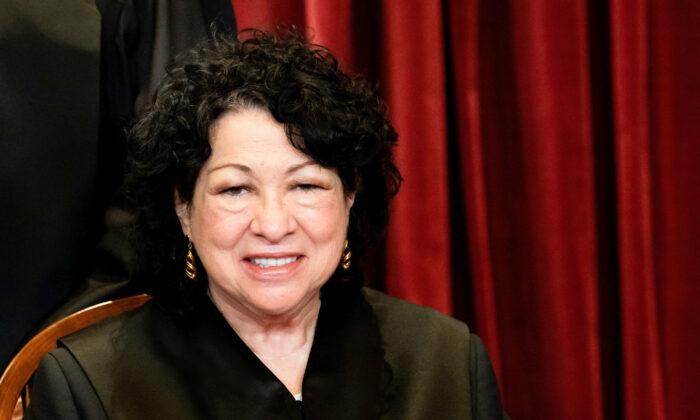The three left-leaning justices on the U.S. Supreme Court expressed heavy skepticism on Jan. 17 of attorneys’ proposal that courts afford executive agencies less deference in deciding whether a regulation abides by laws that Congress passes.
Attorneys for commercial fishing companies asked the court to overturn the decades-old precedent known as “Chevron deference,” which generally directs courts to prefer an agency’s interpretation of ambiguous language within statutes.
The consequences of overturning this precedent could be significant because it has informed thousands of court rulings and would alter how much judges wade into debates over the meaning of particular statutes.
Some of her questions in the first oral argument surrounded concerns that by not deferring to agencies, courts would be making policy decisions in their interpretation of statutes. Roman Martinez, who represented Relentless Inc., disagreed and said that courts would be making legal decisions by interpreting statutes.
Justice Elena Kagan fielded hypotheticals to Mr. Martinez, wondering whether courts should be involved in deciding whether a cholesterol medication should be classified as a dietary supplement or a drug.
“You think that the court should determine whether this new product is a dietary supplement or a drug without giving deference to the agency, where it is not clear from the text of the statute or from using any traditional methods of statutory interpretation?” she asked Mr. Martinez.
Stability of Law
Many of the justices’ questions focused on the fallout of overturning Chevron deference as it has been used more than 18,000 times by federal courts and is “unquestionably one of the foundational decisions in administrative law,” according to the Congressional Research Service.Justice Sonia Sotomayor told Mr. Martinez that overturning Chevron would put many cases in question as they were decided with Chevron. Solicitor General Elizabeth Prelogar, who defended Chevron, similarly warned that the precedent had informed decision-making by various entities.
“There are agency regulations out there that have been on the books for decades,” she said. “People have made investment decisions on the basis of that. People have decided what contracts to enter into on the basis of that. States in cooperative federalism programs have designed and invested the resources into their share of that program.”
“And all of that could be thrown into disarray if now it can be subject to renewed challenge on the basis that that regulation was upheld using the wrong—answering the wrong—question, not looking at whether it conflicts with some purportedly better interpretation of the statute.”
Mr. Martinez and former Solicitor General Paul Clement, who represented the Loper Bright petitioners, argued that the court should discard Chevron’s two-step process for judging regulations. That involved first determining whether Congress had spoken clearly about the issue under consideration and, if not, whether the agency was drawing a reasonable conclusion from ambiguity in the statute.
Echoing others’ criticisms of Chevron, Mr. Martinez argued that this took power that the U.S. Constitution reserves for the judiciary. He said that courts should instead just apply the usual tools of statutory interpretation, such as legislative history, in deciding what Congress allowed. Mr. Martinez indicated that Chevron was unworkable because judges may differ in how they understand ambiguity.
“I do think the ambiguity trigger introduces a whole kind of threshold question that’s very hard to apply neutrally,” he said.
Justice Kagan also asked Ms. Prelogar to discuss the alternative to Chevron and the variability that would occur in court decisions.
“I think that this is a really important point to focus on because ... in a world without Chevron, it’s not as though Congress is always going to speak clearly and it won’t leave gaps or ambiguities in statutes—genuine ambiguities where you apply the tools [of statutory interpretation] and at the end you are left with no certainty about what Congress was trying to do,” Ms. Prelogar said.
Justice Kagan responded that “those differences were part of the impetus for Chevron because those differences were looking awfully ideological in nature, awfully partisan in nature. And Chevron, all the empirical evidence suggests, dampens that kind of ideological division between courts.”







